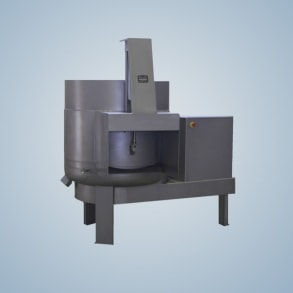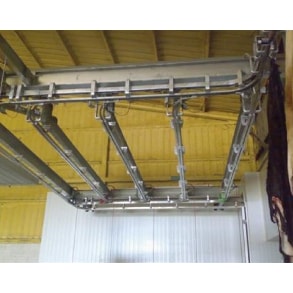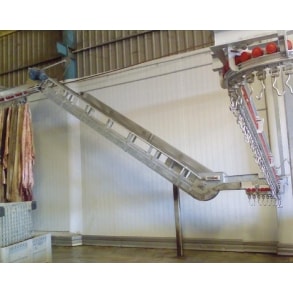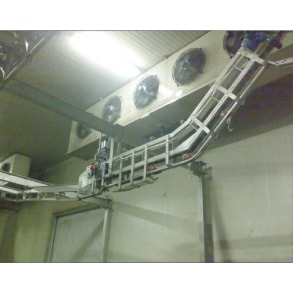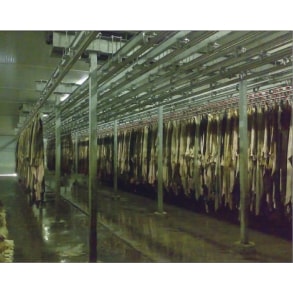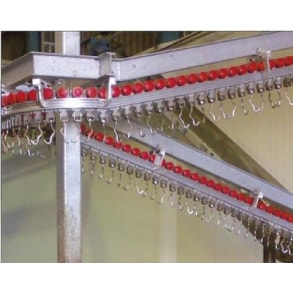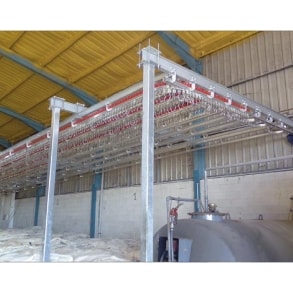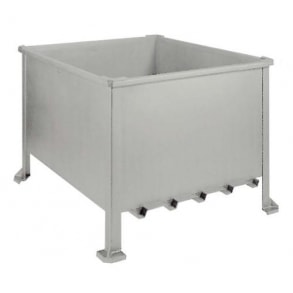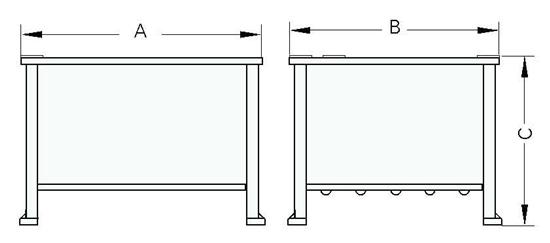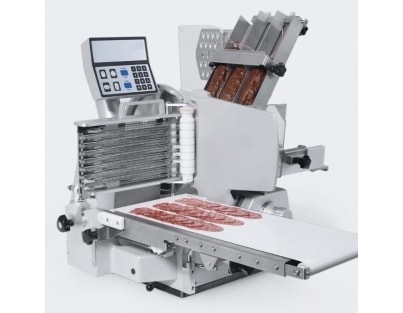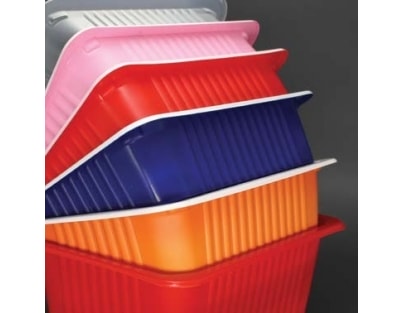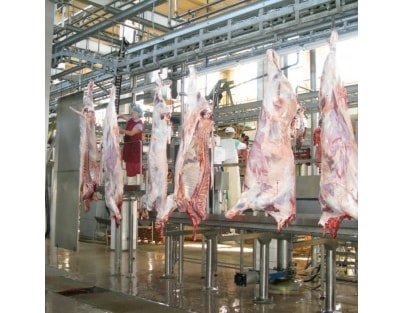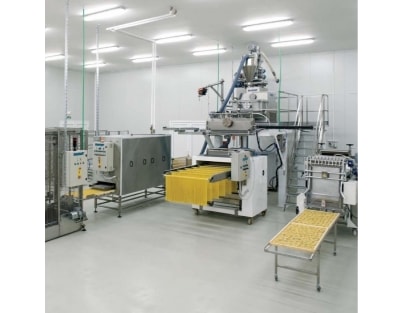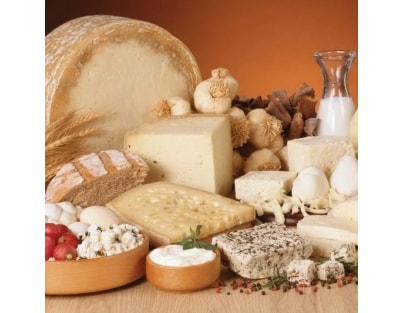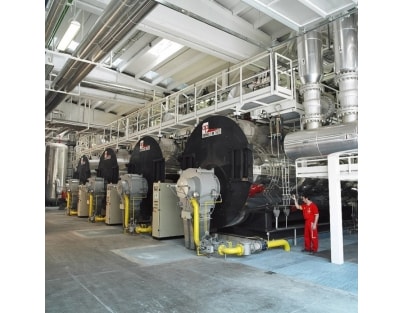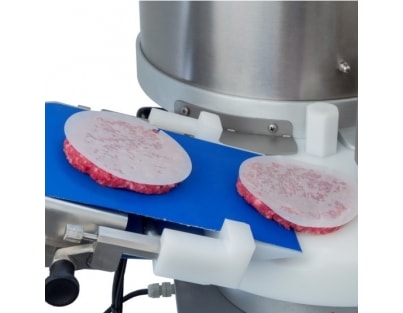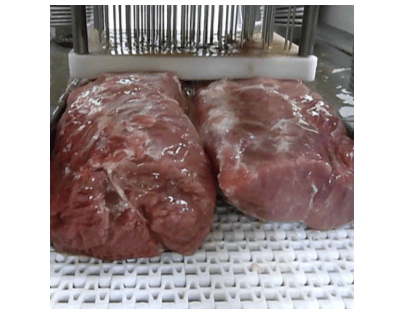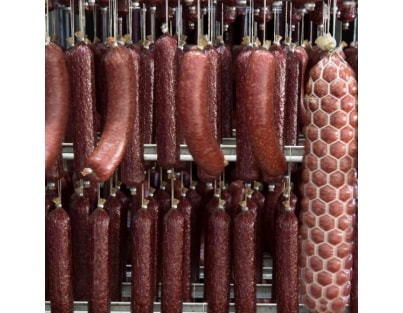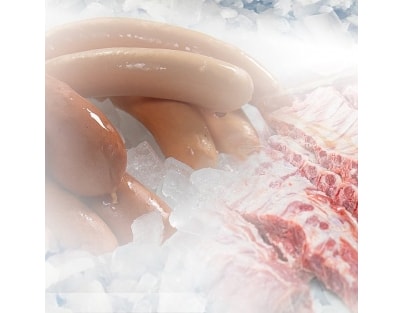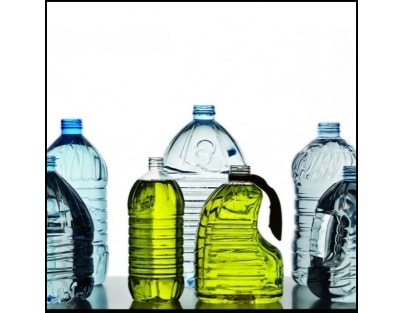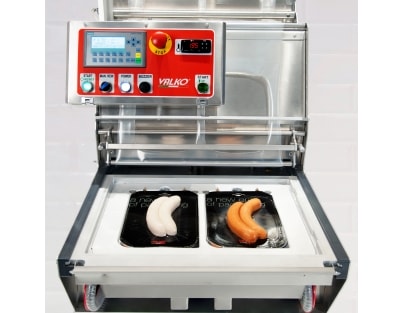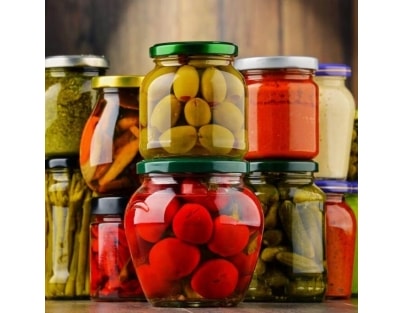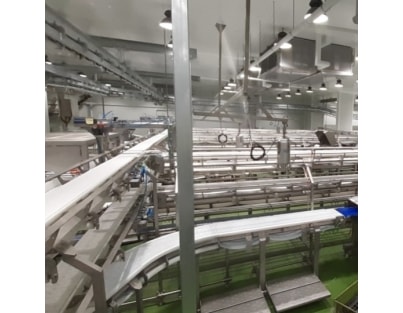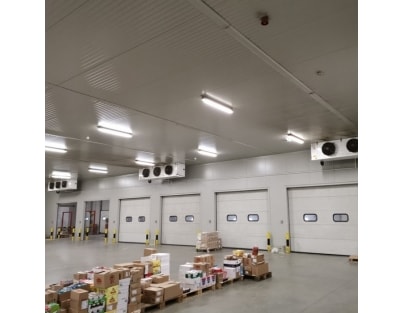This machine can be used to automatically salt skin.
Made up of:
- Support structure.
- Chassis with 4 wheels to move the structure.
- A hopper fixed to the chassis, supported with buffers.
- Ejector placed underneath the conical part of the hopper, with an adjustable lid for the sail to come out of.
- Control panel with stop and start switches.
Options:
- Switch to control one or two of the vibrators depending on whether the salt is stuck together in the hopper.
- Program to add up the skins that are being salted, with a digital screen to see the numbers.
- Limit switches to detect whether or not the hopper has finished, to make it stop.
Structure made of hot-dip galvanised steel. The rest is made of AISI-304 stainless steel, while the hopper is made of AISI- 316 stainless steel.
The hopper is controlled manually, using a button. Once it is activated, it moves to the edge. At the same time the ejector also starts, allowing a stream of salt to fall onto the skin placed underneath.




